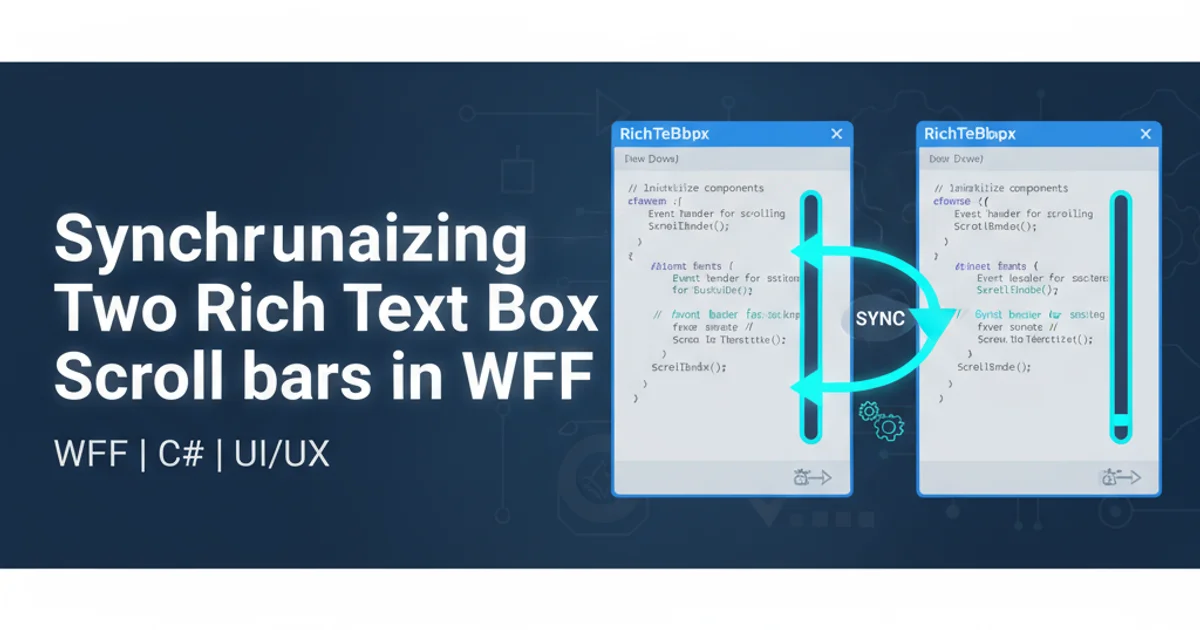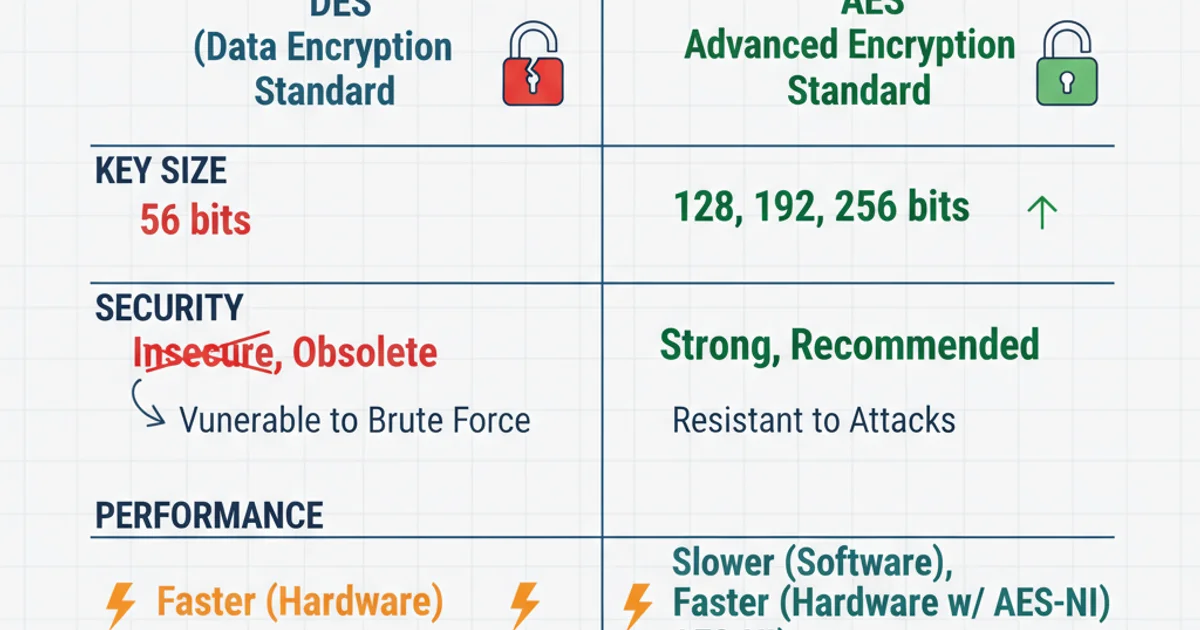Which encryption AES/DES should i use for private key for ssl certificate?
Categories:
Choosing the Right Encryption for Your SSL Private Key: AES vs. DES

Understand the critical differences between AES and DES encryption algorithms and why AES is the definitive choice for securing your SSL certificate's private key.
When generating an SSL certificate, you'll inevitably encounter options for encrypting its associated private key. This encryption adds an extra layer of security, protecting the private key itself from unauthorized access. Two common algorithms that might come up are DES (Data Encryption Standard) and AES (Advanced Encryption Standard). This article will clarify which one you should use and why, focusing on best practices for modern security.
Understanding Private Key Encryption
The private key is a crucial component of your SSL certificate. If compromised, an attacker could impersonate your server, decrypt sensitive communications, or sign malicious code. To prevent this, the private key file itself is often encrypted with a passphrase. When you use tools like OpenSSL to generate a private key, you're typically prompted to enter a passphrase, which then encrypts the key using a symmetric encryption algorithm. This means the same passphrase (or key derived from it) is used for both encryption and decryption.
flowchart TD
A[Generate Private Key] --> B{Enter Passphrase?}
B -->|Yes| C[Encrypt Private Key]
C --> D[Store Encrypted Key]
B -->|No| E[Store Unencrypted Key]
D --> F{Use Key?}
E --> F
F --> G[Decrypt Key (if encrypted)]
G --> H[Load Key into Server]
H --> I[Establish SSL/TLS Connection]Workflow of private key generation and usage with optional encryption.
DES: An Outdated Standard
DES, or Data Encryption Standard, was once a widely adopted symmetric-key algorithm. However, it was developed in the 1970s and uses a relatively small key size (56 bits). While it was groundbreaking for its time, modern computing power has rendered DES highly vulnerable to brute-force attacks. A 56-bit key can be cracked in a matter of hours or even minutes with dedicated hardware. For this reason, DES is considered cryptographically insecure for any new applications, especially those involving sensitive data like SSL private keys.
AES: The Modern and Secure Choice
AES, or Advanced Encryption Standard, is the successor to DES and is the current standard for symmetric-key encryption. It supports key sizes of 128, 192, and 256 bits, offering significantly stronger security than DES. AES is widely adopted by governments, financial institutions, and security protocols worldwide, including TLS/SSL. When you're prompted to choose an encryption algorithm for your private key, AES (often seen as aes256, aes192, or aes128) is the correct and secure choice.

Key differences between DES and AES.
Practical Application with OpenSSL
When generating a private key using OpenSSL, you can explicitly specify the encryption algorithm. If you don't specify one, OpenSSL might default to a less secure option (like DES-EDE3-CBC, which is 3DES, still weaker than AES). It's always best practice to explicitly choose AES-256 for maximum security.
openssl genrsa -aes256 -out private.key 2048
Generating an RSA private key encrypted with AES-256.
In the command above:
genrsaspecifies that we are generating an RSA private key.-aes256explicitly tells OpenSSL to encrypt the private key using AES with a 256-bit key. You will be prompted for a passphrase.-out private.keyspecifies the output filename for the encrypted private key.2048specifies the key length for the RSA key, which is a common and secure size.
Conclusion
For securing your SSL certificate's private key, the choice is clear: always opt for AES encryption, specifically AES-256. DES is an outdated and insecure algorithm that should be avoided in all modern deployments. By using AES-256 and a strong passphrase, you ensure that your private key remains protected, upholding the integrity and confidentiality of your SSL/TLS communications.